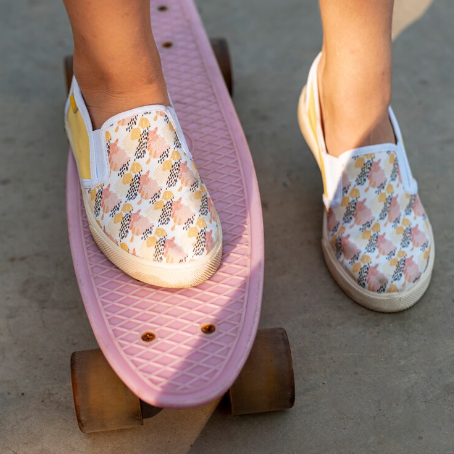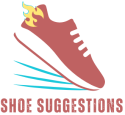Elevate Your Stride
High Arch Haven
Welcome to shoesuggestions.com, your dedicated destination for discovering the perfect footwear that not only supports but celebrates the elegance of high arches. Explore our curated collection designed to complement your distinctive foot structure without compromising on style.
Explore Our High Arch-Friendly Collection
01.
Athletic Marvels
Discover sports shoes with superior arch support, ideal for running, training, or any high-impact activities.
02.
Casual Chic
Find everyday shoes that seamlessly blend comfort and style, perfect for casual outings or daily wear.
03.
Elegance in Every Step
Elevate your formal wardrobe with our selection of sophisticated footwear designed to complement high arches without sacrificing style.
How to Fix High Arches? A Step by Step Guide
The question “how to fix high arches” is quite commonly asked by people facing the issue. But before any further implications and explanations, one needs to have a very vivid outlook of what exactly are high arches and does the complainer even has them or not.
What are High Arches?
High arches are characterized by elevated underfoot areas of our feet. This means that the arches of our feet are elevated to a very higher level than normal.
They usually occur when a person goes through the issue of supination. In supination, your feet excessively roll inward. This abnormal gait style leads to supination. High arches are also formed due to the fact that your feet supinate excessively. They leave their normal gait pattern.
Does having high arches a bad thing?
A high arch in the foot is not necessarily a bad thing. In fact – it aids the development of stability and proprioception – and active muscles work to bear partial weight at all times. However – a high foot arch may cause structural imbalances and force the body into odd positions (which can lead to long-term injuries).
The high foot arch, also known as a cavus foot, is a condition in which there is a considerably higher height at the medial heel. This is measured using the calcaneal index and can be measured with a radiograph (x-ray). Palmer’s high-arched foot is the most common kind of chronic high arches.
By overpronation means that due to lack of good arches in the foot, the weight is shifted to the outside edges and outer portion of the foot. Thus abnormally stretching and exerting too much pressure on the outside of the heel.
Depending on the high arch’s severity and location, about 10-15% of individuals will report experiencing pain associated with this condition. This results in different structural problems, such as plantar fasciitis and metatarsalgia. Having a high arch can also make you more prone to knee injuries, such as patellofemoral pain syndrome (runner’s knee).
One of the best ways to reduce any risk of injury for a high arch foot is to wear a shoe that nicely supports the arch. An excellent supportive shoe will have a raised heel and a well-cushioned sole.
Causes of High Arches
Every issue or problem that arises is because of a certain factor that causes its appearance. Such factors do not make a problem at once. These keep on accumulating and when such factors are not kept in check regularly, they lead to bigger issues. Such factors which cause high arches are as follows:
Improper care of injured feet
When a person is injured, he needs to keep good care of his feet. Otherwise, such issues can also lead to unhygienic issues which can, in turn, cause high arches.
Twisted Ankles
Sprains or twists in ankles must be dealt with professionally and proper rest should be taken. But some people do not do so and high arches occur due to walking with sprained ankles.
Wearing Wrong Type of Shoes
Enough emphasis has been laid on this fact in our previous articles too that whatever the situation maybe you are always supposed to stay comfortable and wear shoes which support your feet. Some people ignore this fact and also develop high arches for wearing the wrong shoes.
Long Run Sessions
If you are already a supinator and you tend to run daily for long periods of time, then obviously you will eventually develop high arch feet and your normal arch shape will be lost.
High Arch Symptoms
When an issue arises, its presence is detected by the symptoms which appear and cause uneasiness to the person facing them. Such symptoms of high arch feet are:
- Plantar fasciitis
- Achilles tendon
- Elevated arches
- Stabbing feet pain
- Blister formation
- Frequent Joint dislocations
How to Tell if you have High Arches?
When some person is told that he has a certain problem or issue, he always needs self reconciliation. The same is the case with supination, a person really needs to make sure whether he is a supinator and the most frequently asked question is “How do I know if I have high arches?”
Well, you need not worry and just follow the following few steps to check if you have high arches or not:
Self examination
Stand in front of a mirror on a flat surface with light facing your feet. Observe your feet and see if your arch is leveled with the ground or elevated to a higher level. If so, then yes you have high arches. In this way, you will know if you have high arches.
Medical Guidance
You should also go and seek medical consultation from a physician whether or not you have high arches.
Why Choose shoesuggestions.com for High Arches?

Superior Arch Support
Our collection prioritizes shoes with enhanced arch support, designed to cradle and support high arches for a comfortable and secure fit.

Cushioned Comfort
Experience cloud-like comfort with shoes featuring advanced cushioning technologies, providing a plush feel with every step.

Stylish Support
Say goodbye to the misconception that supportive shoes lack style. Our curated selection combines fashion-forward designs with the support flat feet need.

Diverse Choices
Whether you’re looking for athletic shoes, casual wear, or professional styles, our collection caters to every aspect of your lifestyle.
